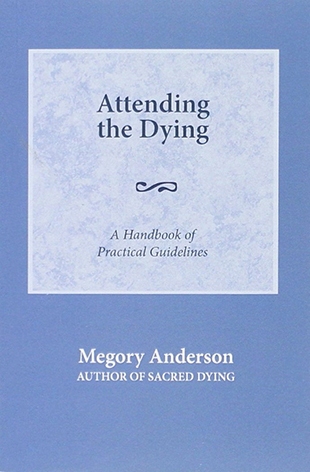"As a chaplain, you have the ability and the calling to set the stage for a good and holy death. Creating "sacred space" is one of the first steps in setting the environment apart from day-to-day issues, which in turn helps everyone present remember the sacredness of the event unfolding. Family members and loved ones often take their cues from you, the chaplain. If you honor the space and environment as something set apart, they will realize that the event taking place is holy.
"The act of creating a sacred space allows for privacy and intimacy; it also defines the physical space so that it can contain the vigil process. Whether you find yourself in a hospital room, a nursing home, or a private residence, the need stays the same: to create and hold a space that is holy in order for this death to happen peacefully. As you create sacred space in the dying person's location, you want to be creative but not intrusive. This is one of the 'busy' times of vigiling, when you may be moving or cleaning things. However, this is not about what you like or find attractive. From this point on, your role as the chaplain or vigiler is to do what you sense is right for this particular dying person.
"• Clear the clutter from the room/space. Straightening the surroundings and opening windows can help make the people involved feel better about the circumstances; the act of cleaning up can give a sense of purpose and helpfulness.
"NOTE: be aware of what is clutter and what is there by design.
"• Bring in sacred objects. Devotional objects like icons, a rosary, crosses, prayer beads, or significant medallions are important for some people. For others, special objects from their lives, like photographs or even childhood toys, are sacred. Prayer books or books of Scripture are often helpful to have in the sacred space.
"• Contain or mark the space. If the dying takes place in a hospital or nursing home room, consider using blankets or curtains. Sometimes candles or lamps in the corners of the room can be used to mark the space, as can incense.
"• Sanctify the space. Help everyone present to recognize that this space (and time) is sacred and needs to be treated with reverence. Your instructions don't have to be elaborate; if those gathered are religious, you can ask for God's presence. If not, begin with a simple statement, such as 'We are gathered here to help our loved one as she dies.'
"• Let others know that a vigil is a process, particularly if you're in an institutional setting. A sign on the door is always appropriate. One nursing home uses a small table with a candle on it outside the door to allow other residents a moment of quiet reflection as they walk by."
